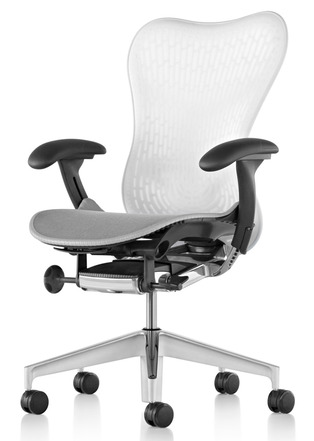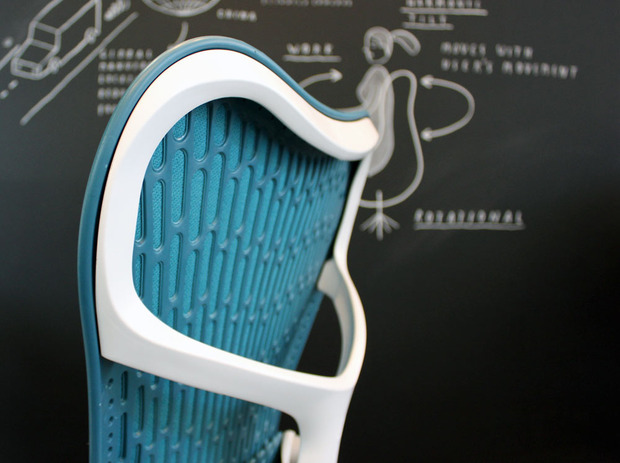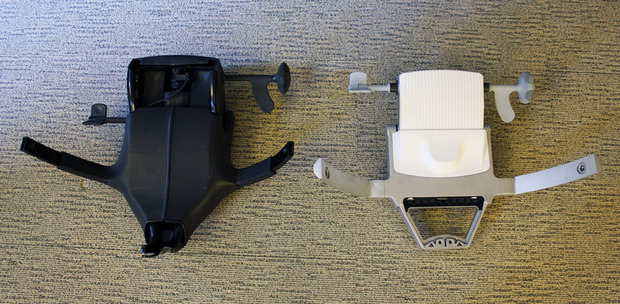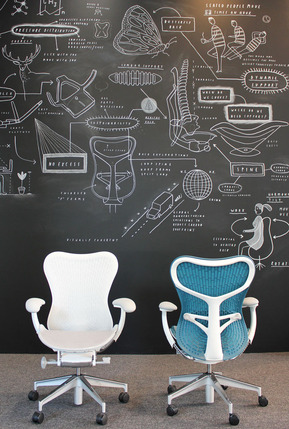Herman Miller Mirra 2
Berlin’s Studio 7.5 redesigns the Michigan furniture maker’s classic office chair



Inspired by the evolution we’re currently witnessing within home and office environments, Herman Miller once again teamed up with Berlin-based design firm Studio 7.5 to revisit one of the most innovative and top selling office chair designs of the past decade, the Mirra Chair. Studio 7.5 developed a more agile and adaptive chair by taking a micro lens to the average office worker’s sedentary work style alongside a more macro approach, which looked at the chair’s larger role in an increasingly mobile and collaborative work place. The second iteration may share a name and general profile with its predecessor, but little else is the same—the Mirra 2 has been completely redesigned from the castors up.

“It’s difficult to start a mission like that—to revisit your own design. You have given your best already the first time,” explains Claudia Plikat, one part of the design quartet behind Studio 7.5. Speaking on the brief to redesign the Mirra Chair, Pikat tells us this time around the team aimed to create an even more dynamic chair by making the smartest use of today’s tools and materials. “If you dig deeper into it of course you will see you could do better. And 10 years is a good time for technology moving forward, so there are things possible that were not possible ten years ago.”

The most noticeable change between the Mirra Chair and new Mirra 2 is the overall reduction in size. Studio 7.5’s new version boasts a substantially smaller core, now produced and assembled entirely in-house at Herman Miller, more adjustable arms and an expansive back. The Mirra 2 is more refined and much more elegant—at least as elegant as an office chair can be. To reinforce and improve flex, the back support’s ratio of hole to material has been inverted, reducing the plastic and improving air flow. “This whole principle only works because of the fabric and the plastic—a reinforced fabric you could call it,” explains Plikat. The two materials are not bonded, but molded against one another to be free to contour to any number of unique back shapes. “It’s really a new kind of construction.”

All improvements come together to reduce the weight by 25%—nearly 18 pounds, or as Roland Zwick of Studio 7.5 points out, nearly a whole Setu Chair (another notable design by the studio for Herman Miller). Not only is the drastic reduction beneficial to the sitter’s form, but the decrease in materials means less consumption and more efficient shipping. This conscious approach even extends to design aspects most would miss. “We decided if you wanted to have [Mirra 2’s aluminum base] polished it’s only polished on the top surface because this can be done completely automatically, so no manual labor is involved. It’s a very dirty and toxic job, and we don’t want anybody to have to work in such an environment,” explained Zwick.


While the specifics behind the design overhaul could span pages, you’ll need to sit in the Mirra 2 to experience the change for yourself. We were lucky enough to have the opportunity to do so at Herman Miller’s Milan HQ during 2013 Salone del Mobile. For all others interested, the Mirra 2 chair will be available summer 2013 from Herman Miller directly.
Studio image courtesy of Herman Miller, all others by Graham Hiemstra












